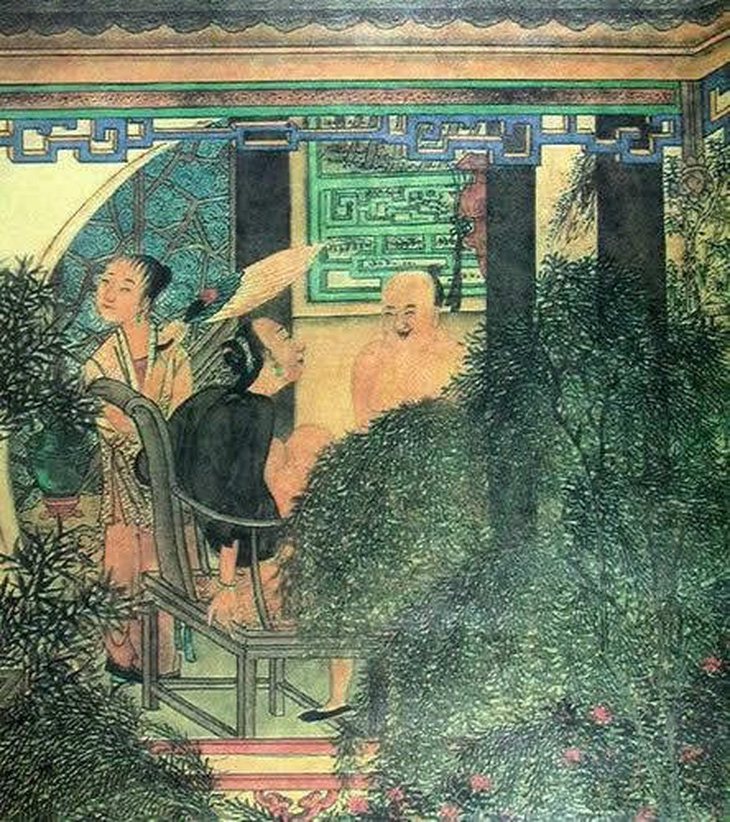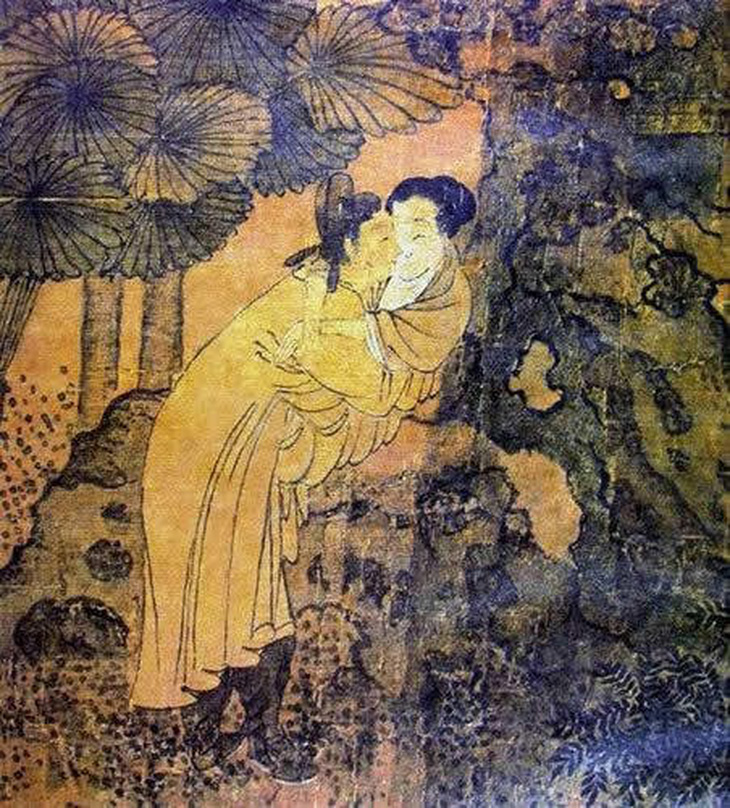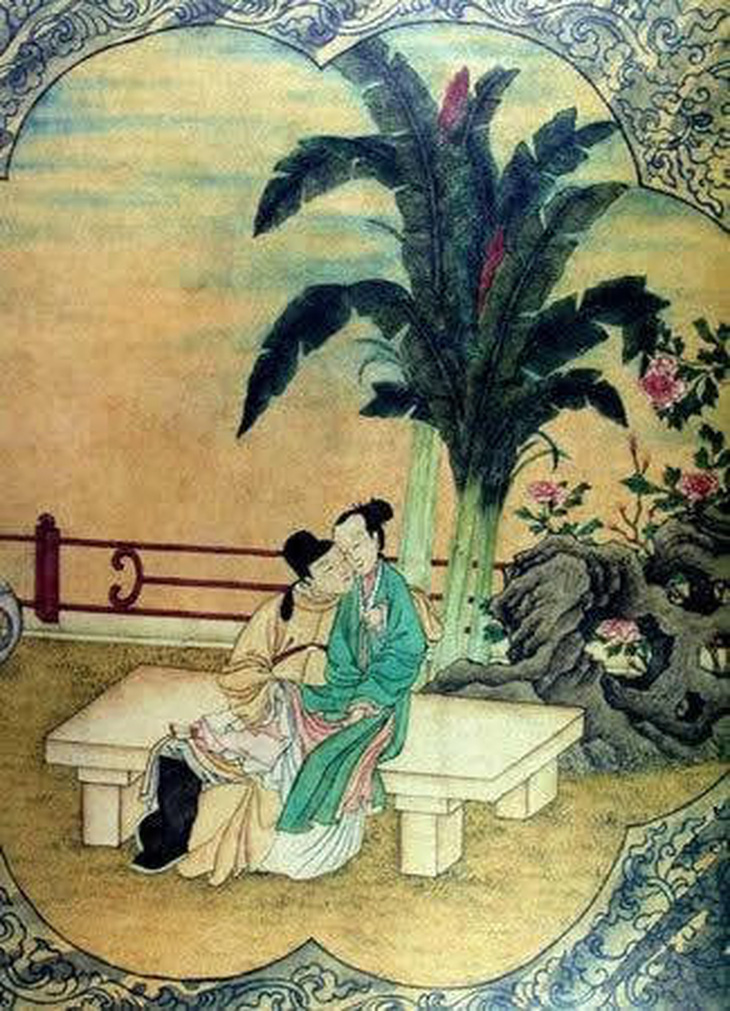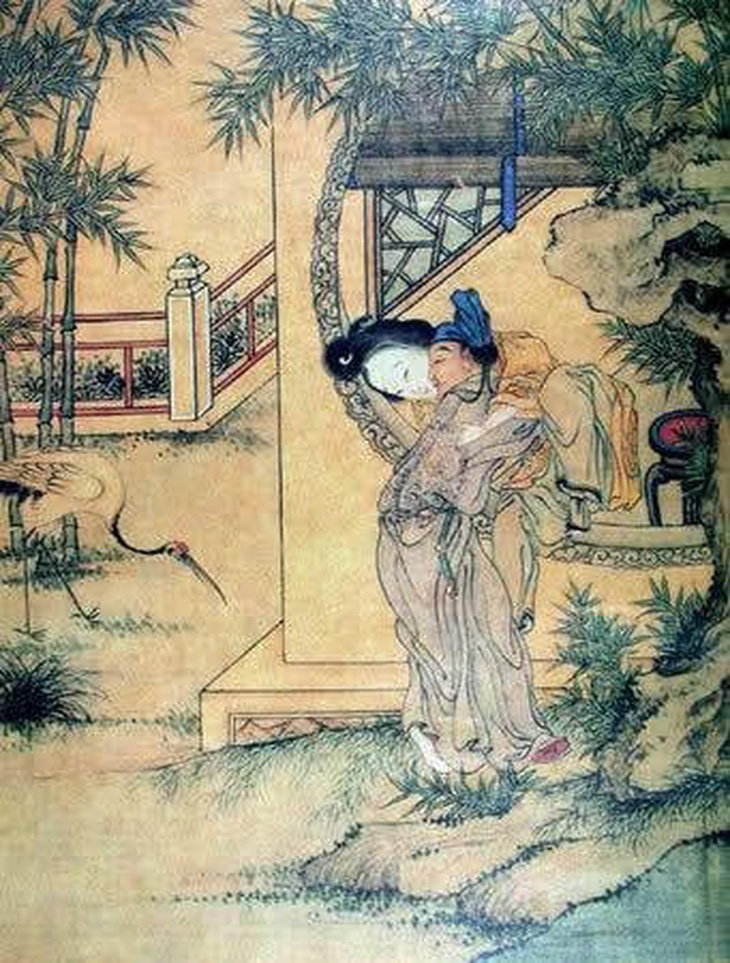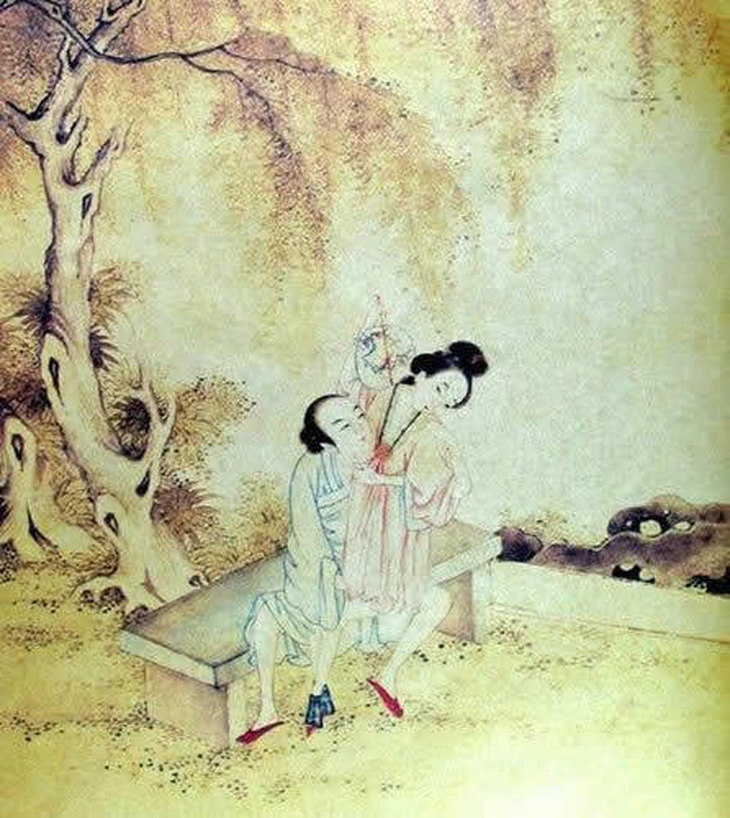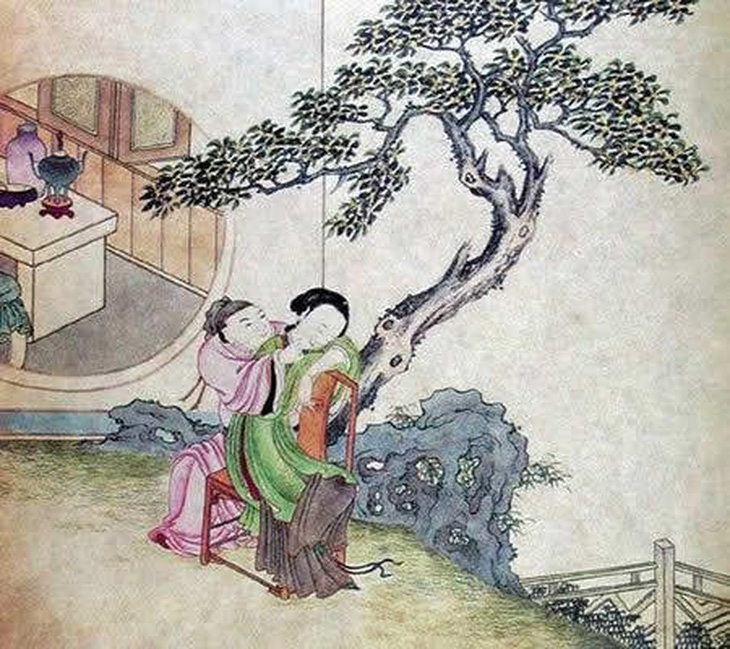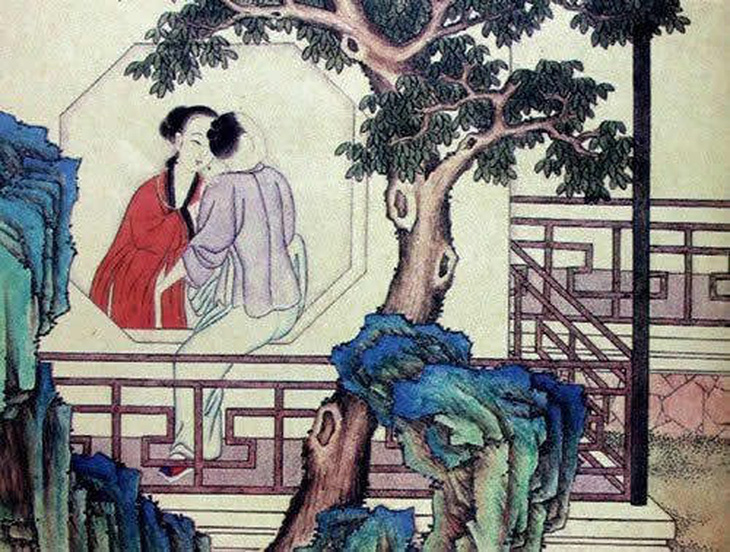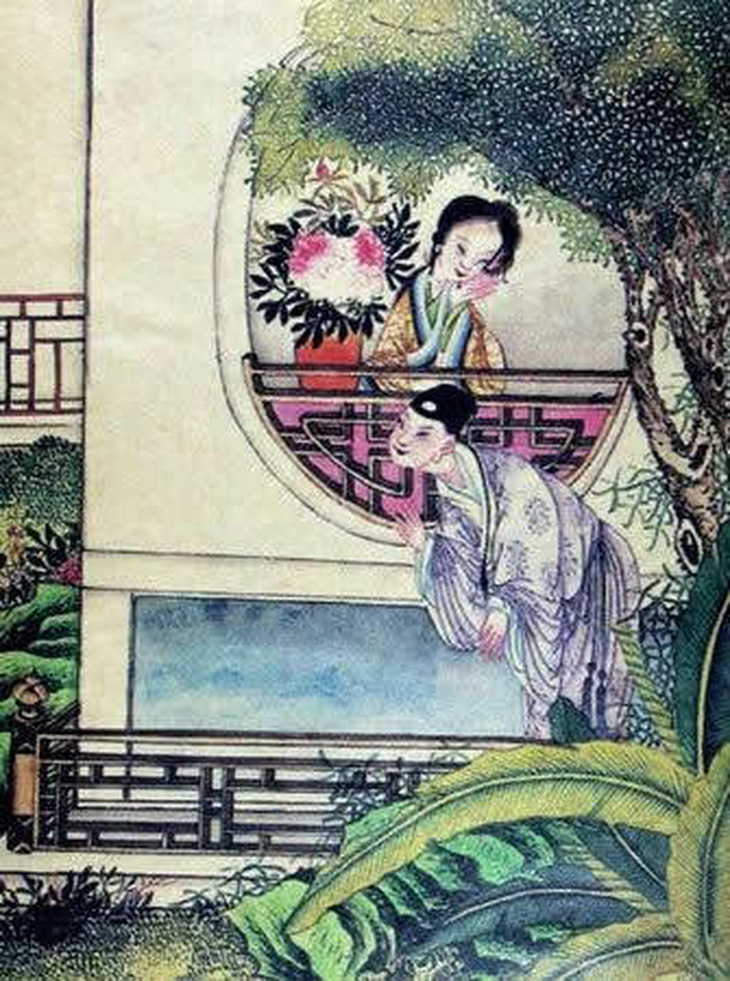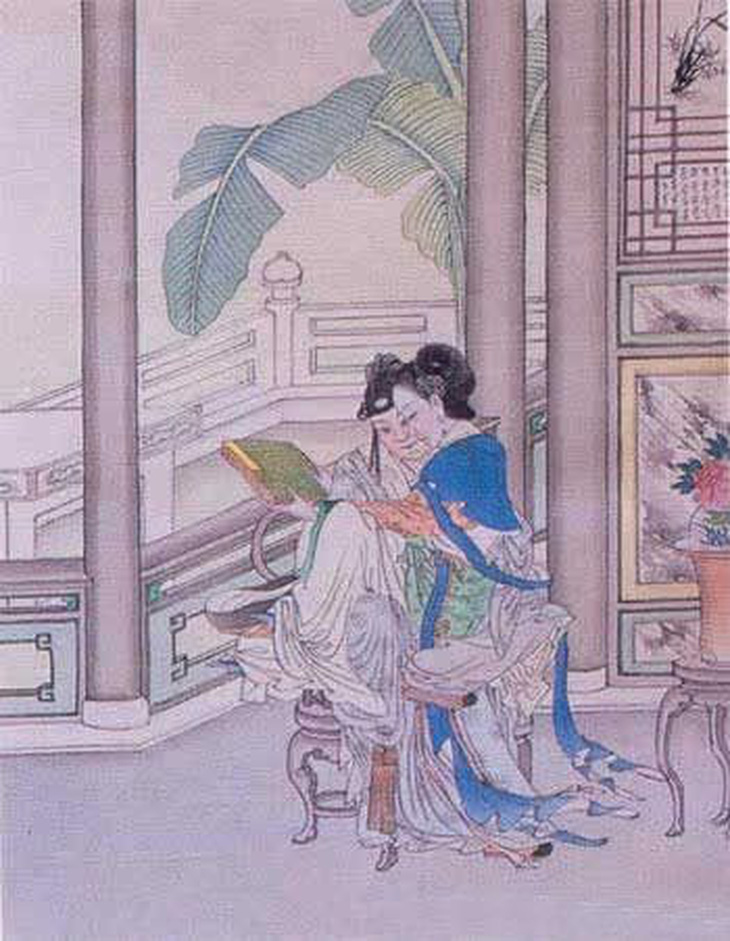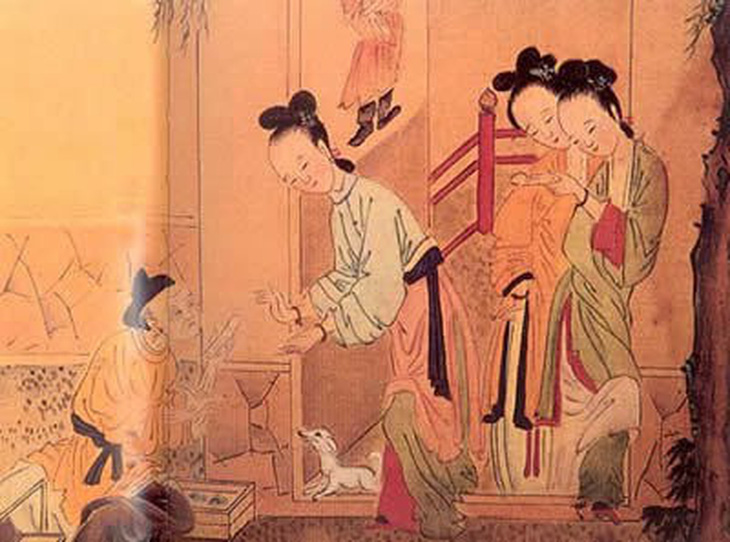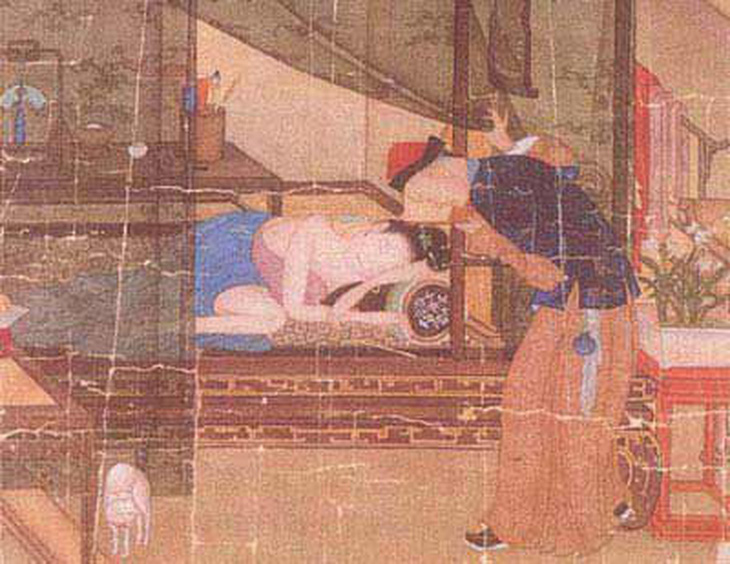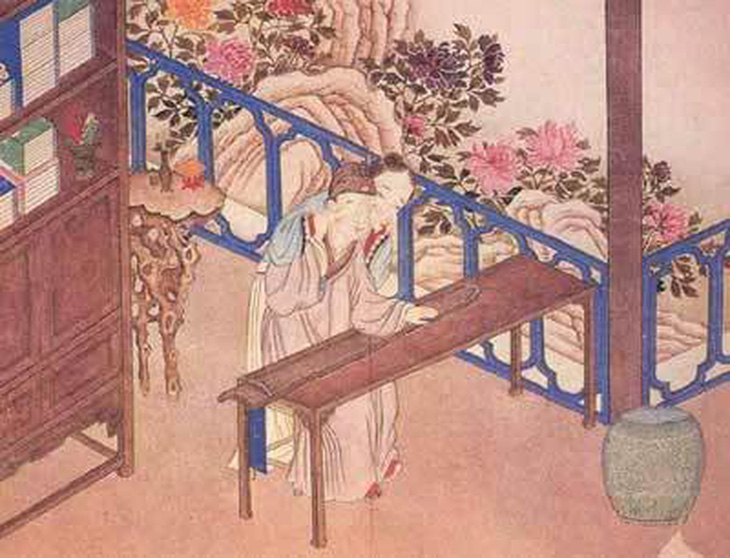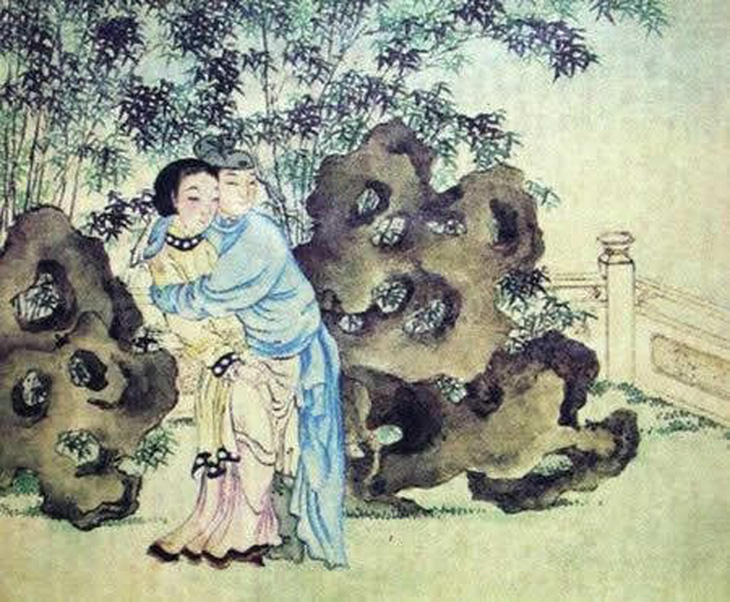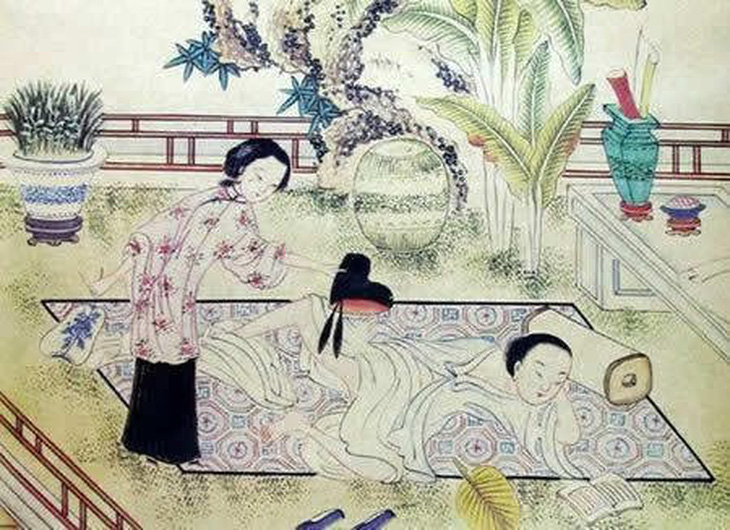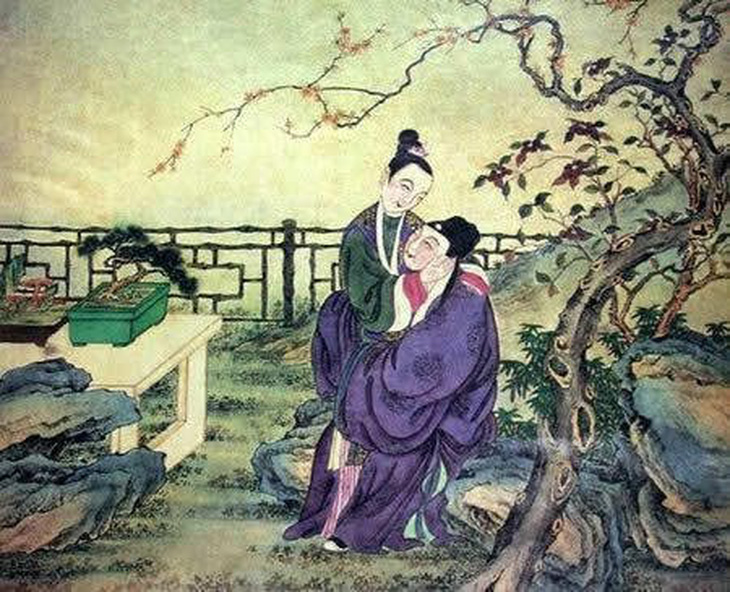Xuan Cung Hoa is a unique and integral part of the sexual culture in ancient China. It holds significant importance in depicting scenes of romance and intimacy. Duong Dan, also known as Duong Ba Ho, is a prominent figure associated with this school of painting
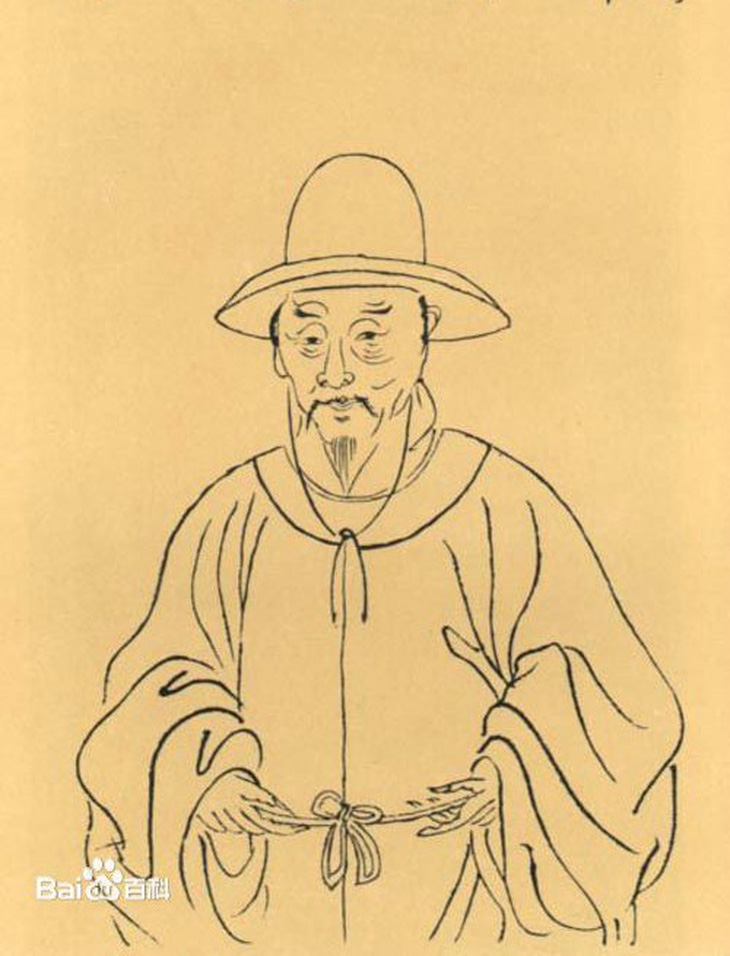
Duong Ba Ho and the sexual culture in ancient China – Photo 1.
A sketch portrait of Duong Dan, also known as Duong Ba Ho – Duong Dan was born on March 6, 1470, and passed away on January 7, 1524. He was also known by the aliases Tu Uy, Ba Ho, and had titles such as Luc Nhu Cu Si, Dao Hoa Am Chu, Thoat Thien Tien Lai… He hailed from Ngo Huyen (now part of the city of To Chau, Jiangsu Province).
During his youth, Duong Dan studied painting under Chu Shen and later became friends with Tham Chu, Van Chung Minh, Chuc Dan Minh, Tu Chinh Khanh, engaging in literary competitions.
According to historical records, Duong Dan was a cultured and talented individual with skills in poetry, prose, and painting. He had a carefree and self-indulgent personality, using the epithet “the most debonair talent of Jiangnan.”
Due to financial difficulties, Duong Dan often traveled to various places to appreciate scenic landscapes and would sketch what he saw and heard, making a living by selling his paintings.
Many intellectuals in ancient times turned to painting as a profession due to their unfavorable circumstances. Duong Dan was one of them, and he referred to himself as “the most debonair talent of Jiangnan.” His paintings of the Spring Palace were vivid and lively, reflecting his romantic nature.
However, Duong Dan’s depiction of the Spring Palace was not merely a result of his debonair nature but also concealed various external influences.

Duong Ba Ho and the sexual culture in ancient China – Photo 2.
The female figures that Duong Dan painted often had a prominent feature known as the “three white spots.” These spots were a white dot on the forehead, one on the nose, and one under the chin, which helped later generations distinguish genuine works by him – Photo: Woai huahua
Using courtesans or mistresses as Modem

Duong Dan excelled in portraying human figures, especially women. His paintings of the Spring Palace were closely related to his personal life and revealed his indulgent and unrestrained character as Duong Ba Ho.
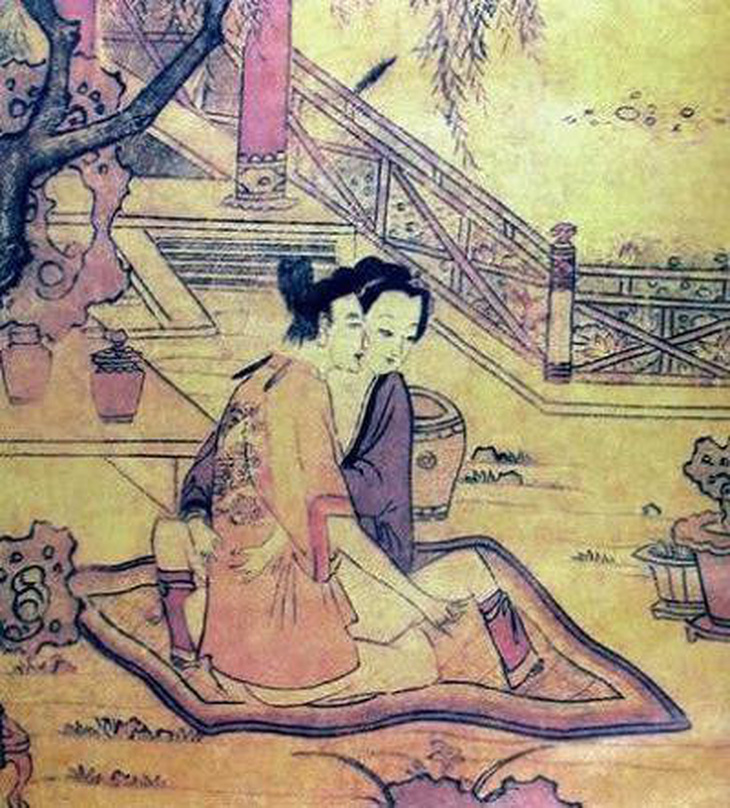
In fact, one could argue that this was a satirical reflection of the moral corruption within the bureaucratic system, the dark side of society, and the feudal rituals of that era.
There are many historical accounts of Duong Ba Ho’s Spring Palace paintings. In the Thái Bình Thanh Thoại written by Tran Ke Nho during the Ming dynasty, it is mentioned that Duong Ba Ho had a book documenting his intimate encounters with courtesans, titled Phong Luu Tuan.
The book states: “Duong Ba Ho’s Phong Luu Tuan consists of thousands of words, all recording the intimate affairs in the Qing Palace.” Although Phong Luu Tuan has been lost over time, it is evident that Duong Dan’s Spring Palace paintings were based on his own experiences.
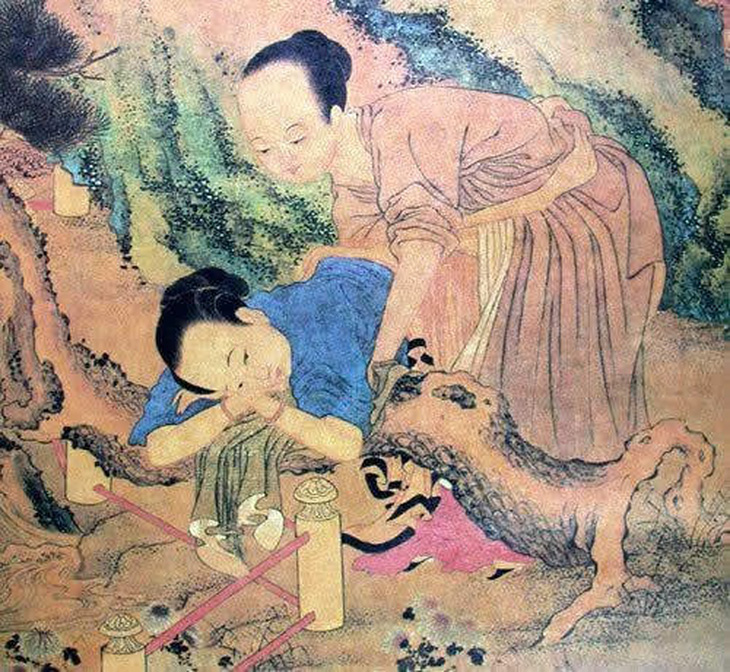
In Uyen Uong Bi Pho, it is mentioned that Duong Ba Ho had another work called Luc Ky, which may refer to the flower battle paintings he mentioned – Photo: Sohu
Although the story of “Duong Ba Ho seducing Thu Huong” is a fictional legend, his passion for women and his frequent indulgence in romantic affairs are undeniable truths.
The common belief is that ancient China was bound and restricted by feudal rituals, and the art of depicting the human body was underdeveloped or neglected due to the prohibition of explicit paintings. Artists were not allowed to use nude models. Therefore, the ancient Chinese Spring Palace paintings largely lacked artistic value and did not produce masters like Michelangelo in Europe.
Duong Dan often used courtesans and mistresses as his models in the Spring Palace paintings, which not only conveyed beauty but also captured genuine emotions.
Duong Ba Ho and the sexual culture in ancient China – Photo 4.
This is one of Duong Dan’s portrait paintings of women, with vivid and lively brushwork – Photo: Ai huahua
According to professional artists and appraisers, the female figures painted by Duong Dan often had a prominent feature known as the “three white spots.” These spots were a white dot on the forehead, one on the nose, and one under the chin. This became a standard for distinguishing genuine works by Duong Dan.
Duong Dan’s female paintings included Manh Cung Thuc Ky Do, Ban Co Doan Phien Do, Thuong Nga Bon Nguyet Do… However, his large-scale painting, Bi Hy Do, has been lost to history, leaving behind only a few poems written by contemporaries of the Qing dynasty about his Spring Palace paintings, as recorded in various anecdotes.
Unfortunately, Duong Dan’s Spring Palace paintings have been lost for a long time, and only copies remain, such as Thoai Thuc Nhan Yen, Canh Xuan Do Quyen, Hoa Tran Luc Ky… among which the most famous is the book Phong Luu Tuyet Suong Do, consisting of 24 paintings.
Duong Ba Ho and the sexual culture in ancient China – Photo 5.
When we admire the women in Duong Dan’s paintings, we can see that most of them are vibrant and healthy, with round and delicate faces that evoke the image of the beauties from the Tang dynasty – Photo: Woai huahua
How famous are Duong Ba Ho’s Spring Palace paintings?
The extent of Duong Ba Ho’s fame for his Spring Palace paintings is unknown. However, even in literary masterpieces with significant influence like “Dream of the Red Chamber,” there are descriptions of his Spring Palace paintings, indicating their extraordinary significance.
Through the study of Duong Ba Ho’s Spring Palace paintings, modern generations have gained a deeper understanding of the sexual customs, perspectives on sexuality, sexual knowledge, daily clothing, living conditions, and even historical aspects of ancient society.
Even modern doctors often use explicit paintings to stimulate desire in patients suffering from sexual apathy, which is an important therapeutic approach that cannot be overlooked.
Duong Ba Ho and the sexual culture in ancient China – Photo 6.
In reality, through the study of Duong Ba Ho’s Spring Palace paintings, later generations have gained a deeper understanding of sexual customs, perspectives on sexuality, sexual knowledge, everyday clothing, living conditions, and even the sexual lives of people in ancient times. It can even be used to gain insights into history.
The majority of Duong Dan’s paintings of women express the sentiments and dissatisfaction with human relationships, showcasing his unique style influenced by the literati and scholars, opening up a new way of painting that embodies individual freedom. His detailed brushwork demonstrates a carefree and comfortable demeanor.
